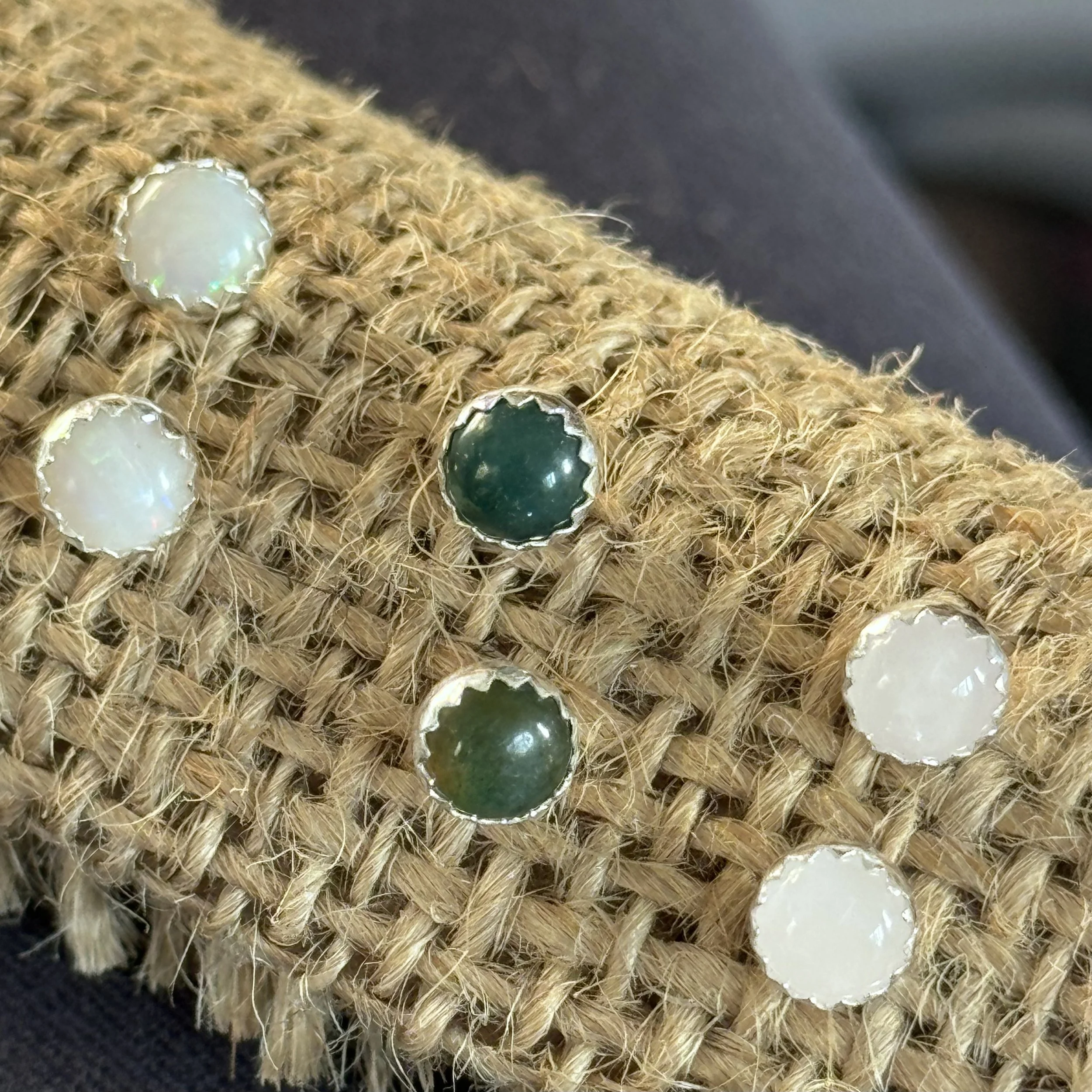October birthstones - Opal and Tourmaline
October, the heart of autumn, is celebrated with two captivating birthstones: Opal and Tourmaline. Each gem is unique in its beauty and history, offering a perfect reflection of the individuality and creativity often associated with those born in this month.
Opal: The Gem of Mystery and Light
Opal, often referred to as the "Queen of Gems," is renowned for its unique play of colour. This gemstone displays a spectrum of hues, from fiery reds and oranges to cool blues and greens, all shimmering within a single stone. The phenomenon, known as "play-of-colour," occurs due to the diffraction of light through the microscopic silica spheres that make up the gem.
Opal studs
Opal drop earrings
Opal and gemstone cluster ring
Historical Significance
In ancient times, Opal was believed to hold the powers and virtues of all other gemstones due to its kaleidoscopic nature. The Romans considered Opal to be a symbol of hope and purity, while the Greeks believed it granted foresight and prophecy. In the Middle Ages, Opal was thought to bring good luck and was highly valued by royalty.
Types of Opals
White Opal: The most common type, featuring a light body tone with bright flashes of colour.
Black Opal: The rarest and most valuable, with a dark body tone that enhances its vivid play-of-colour.
Fire Opal: Known for its intense orange, red, or yellow hues, often with a lesser play-of-colour.
Caring for Opal
Opals are delicate stones, with a relatively low hardness of 5.5 to 6.5 on the Mohs scale. They are sensitive to heat and prone to cracking if exposed to extreme conditions. It’s important to handle them with care, avoid exposure to harsh chemicals, and clean them gently with a soft cloth and mild soapy water.
Tourmaline: The Gemstone of the Rainbow
Tourmaline, October's second birthstone, is known for its incredible variety of colours. This gem can be found in almost every shade imaginable, from deep blues and greens to vibrant pinks and reds. The name "Tourmaline" comes from the Sinhalese word "toramalli," meaning "stone of mixed colors," highlighting its diverse range.
Historical Significance
Tourmaline has been used for centuries in various cultures. Ancient Egyptians believed it passed through a rainbow on its journey to the Earth, absorbing all the colours along the way. In the 18th century, Dutch traders brought Tourmaline from Sri Lanka to Europe, where it quickly became a favorite among royalty and collectors.
Varieties of Tourmaline
Rubellite: A red or pink variety, often mistaken for ruby.
Paraíba Tourmaline: A rare and highly prized neon blue or green variety, often found in Brazil.
Watermelon Tourmaline: A striking gem with a pink center and green outer layer, resembling a watermelon slice.
Caring for Tourmaline
Tourmaline is more durable than Opal, with a hardness of 7 to 7.5 on the Mohs scale. However, it is still important to protect it from scratches and sharp blows. Cleaning is best done with warm soapy water and a soft brush.
Opal vs. Tourmaline: Choosing Your October Birthstone
Both Opal and Tourmaline offer something unique to those born in October. Opal’s mystical play-of-colour and Tourmaline’s rainbow hues make them perfect symbols of the month’s creative and dynamic spirit. Whether you’re drawn to the fiery flashes of Opal or the vibrant spectrum of Tourmaline, each stone provides a beautiful way to celebrate an October birthday.
When choosing between Opal and Tourmaline, consider personal preferences, durability, and the symbolic meanings associated with each stone. Opal is ideal for those who love the idea of carrying a little piece of a rainbow with them, while Tourmaline is perfect for those who appreciate variety and the vibrancy of colours.




